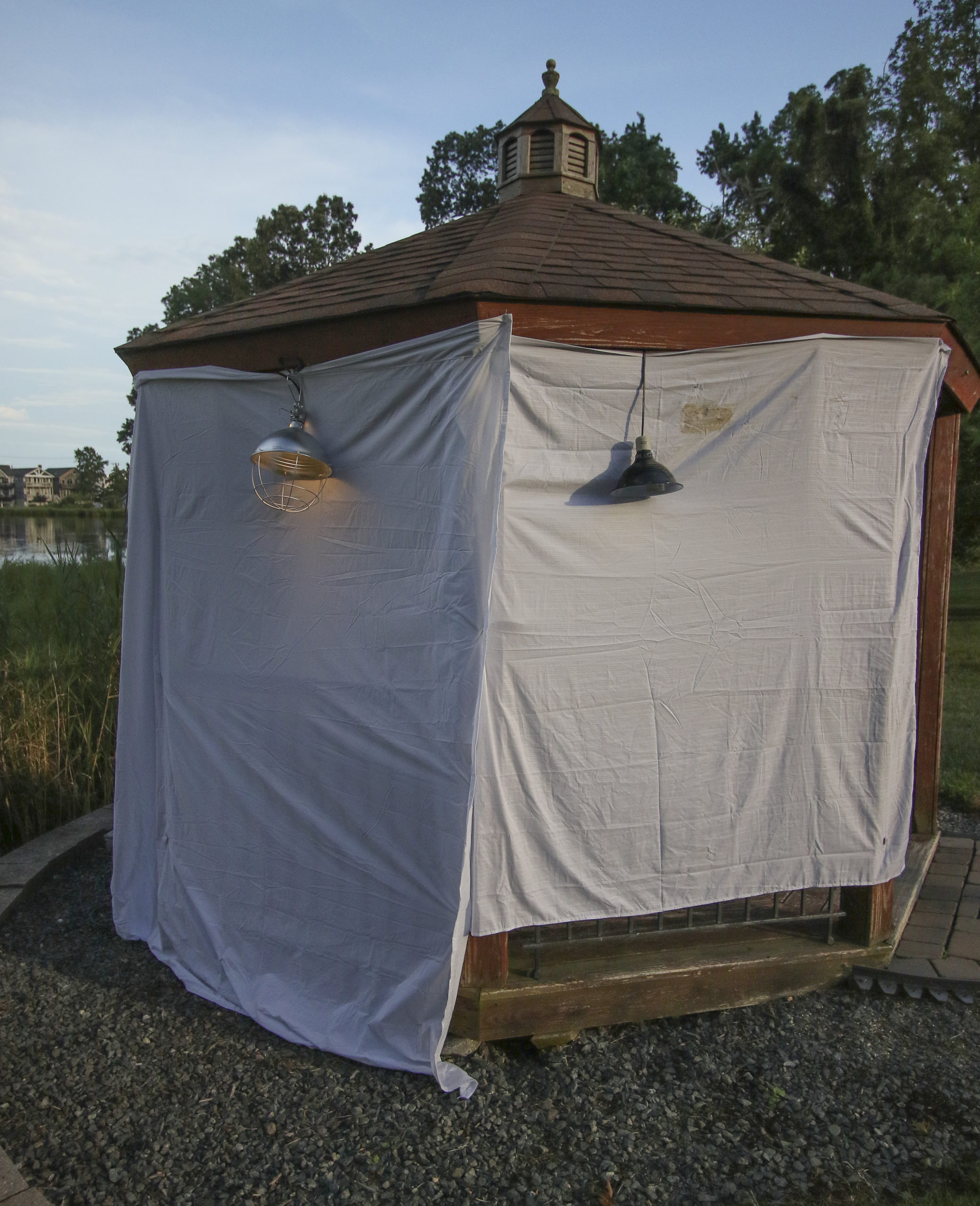Luring Moths to North Beach



By Wayne Bierbaum
Last weekend, I spent time in the Wetlands Overlook Park in North Beach trying to lure flying organisms into a sheet.
It was a weekend event organized by naturalist Lisa Garrett as part of National Moth Week, observed the last week of July. Garrett’s official title is North Beach Director of Eco-Tourism. This event was the second (with hopes to become an annual) moth watch.
National Moth Week began in 2012 by a nonprofit organization in New Jersey, The Friends of the East Brunswick Environmental Commission (nationalmothweek.org). It is gaining popularity as a global citizen science project to help monitor the moth population. All 50 states and 80 countries have participants.
On Friday, large white cloths were hung on two sides of the park’s two gazebos. On the first gazebo, a standard 60W incandescent bulb directed light down onto the cloth. At the second gazebo, panels of ultraviolet lights were used.
As an added incentive, Garrett bushed a special homemade moth attractant onto parts of the cloth and on several trees in the park. The method is called sugaring. The recipe for the bait was a mixture of overripe bananas, molasses and beer. The ingredients are put into a jar and allowed to ferment for a few days. The resulting smell was pretty sweet and intense, sure to attract moths and butterflies from long distances. Both have a great sense of smell and will come from far away to investigate.
But despite the lure, Friday night was not a great night to attract moths. As we were setting up in the afternoon, it was warm and still, which was good, but a cold front passed over just as it was getting dark. It became cooler and breezy which was bad for moths and the event. While we waited for the dark and the moths to arrive, Garrett gathered us in the visitor center to talk about the life history of moths, why they are attracted to light, what caterpillars we should avoid, and gave out moth information, coloring pages and wildflower seeds.
We later walked on the boardwalk and found spiders and a resting dragonfly. Despite the preparation, only a few small moths came to the light and the moth attractant only had fruit flies and ants on it.
On Saturday, there was no breeze and it had warmed up. Rashon Vian, a 12-year-old from Columbia, was among the 35 people who showed up. Rashon is an enthusiastic entomologist—he wore a Moth Week Citizen Scientist t-shirt to the event and brought his own UV lights.
This night, there were many species of moths in attendance, including a mantidfly and a huge Hercules beetle. Rashon told Garrett that he was going to report their findings on the iNaturalist app.
National Moth Week is an invitation for anyone to participate in simple science that will likely become important to understanding our changing planet. A couple of white sheets, a couple of lights and a lounge chair are all you need. Every yard will attract different species from the collection done by the marsh.
I was hoping for a giant Luna moth or an Io moth. Maybe I’ll see one at next year’s Moth Week.
Thanks to Lisa Garrett and Michelle Lancombe for making my visit possible.
